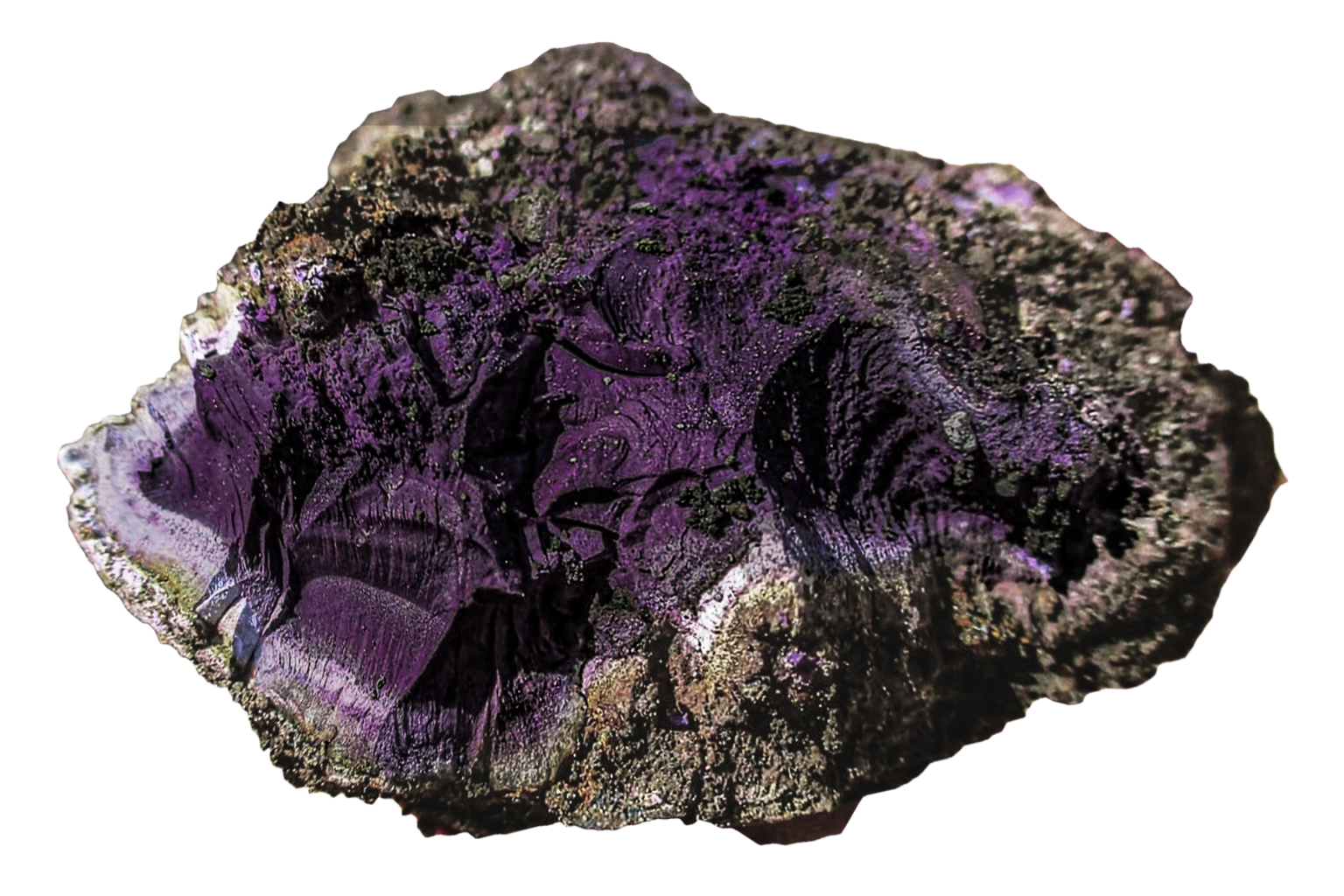An incredibly rare Roman-era object made from Tyrian purple, a substance once worth more than gold, has been discovered at an archaeological site in the United Kingdom. The item was found during excavations at a Roman bathhouse in Carlisle, northern England. Testing revealed that the purple lump contained beeswax and bromine, confirming its identity as Tyrian purple, a highly valued pigment secreted by predatory sea snails. Producing Tyrian purple was a complex and expensive process that required thousands of marine snails, making it a luxury reserved for the wealthy elite.
Tyrian purple was considered the world’s most expensive and sought-after color for millennia. The discovery of a solid sample of this pigment in Carlisle is considered a unique find and possibly the only example in Northern Europe. Tyrian purple was first manufactured by the Phoenicians in the 2nd millennium B.C., with Tyre, a city in Lebanon, being a famous production site. The sample found in Carlisle was likely used for painting frescos, walls of grand public buildings, and elite’s homes. The pigment was also used for dyeing clothes, highlighting its significance in Roman society.
Excavations at the site of the Roman bathhouse in Carlisle have yielded over 2,800 significant finds, including coins, gemstones, and monumental stone heads. The discovery of these objects, along with the Tyrian purple sample, provides valuable insights into the Roman occupation of Britain from A.D. 43 to A.D. 410. The site is located near Hadrian’s Wall, which marked the boundary between the Roman Empire and the unconquered territories to the north, showcasing the strategic importance of the area during Roman times.
The rarity and historical significance of the Tyrian purple sample found in Carlisle have sparked interest among archaeologists and historians. The pigment’s association with luxury and wealth in ancient Roman society underscores its importance as a symbol of status and power. The discovery of such a well-preserved sample sheds light on the trade and manufacturing processes of ancient dyes, providing a unique glimpse into the artistic practices of the time. Additional excavations are planned at the site to uncover more artifacts and deepen our understanding of Roman occupation in Britain.
The partnership between Cumberland Council and Wardell Armstrong on the excavation project has facilitated the discovery and preservation of numerous valuable artifacts from the Roman era. The collaboration has allowed for the exploration of the site’s rich historical significance and the dissemination of findings to the public. The uncovering of rare objects, such as the Tyrian purple sample, has generated excitement among scholars and the general public, highlighting the importance of archaeology in preserving and interpreting our shared cultural heritage.
The findings at the Roman bathhouse in Carlisle offer a rare glimpse into ancient Roman life and the significance of materials like Tyrian purple in shaping social hierarchies and cultural practices. The meticulous process of producing the pigment, along with its symbolism and value in Roman society, adds layers of complexity to our understanding of the past. The ongoing excavations at the site promise to yield further insights into the Roman occupation of Britain and the intricate network of trade and artistic exchange that characterized the empire’s reach. Newsweek’s commitment to covering such groundbreaking discoveries underscores the importance of archaeology in shaping our understanding of history and connecting us to our shared human heritage.


